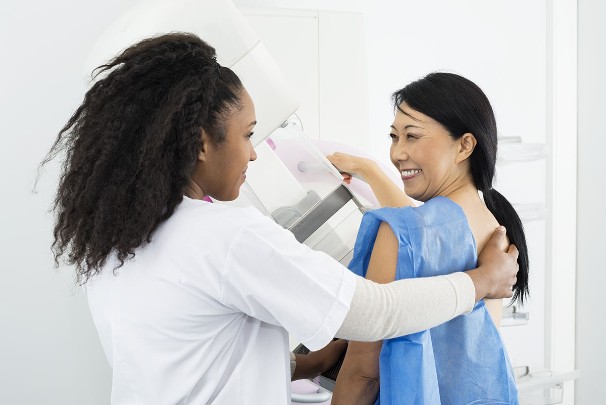St. Joseph Health joins CommonSpirit.org soon! Enjoy a seamless, patient-centered digital experience. Learn more

Finding a lump while performing a breast self-examination can be alarming, but not all breast lumps are cancerous. If you feel a lump in your breast, speak to your doctor to find out if it’s cause for concern and what steps you should take.
The composition of breast tissue can vary based on a variety of things, such as hormone changes. Breasts contain fatty tissue, fibrous connective tissue, blood vessels, nerves, and lymph nodes. “Changes to a woman’s hormones can affect the texture of the breast and contribute to the development of breast lumps,” said Erin Fleener, MD, medical oncologist with The Cancer Clinic and St. Joseph Health. Some breast lumps feel like a general area of thickened tissue, while others feel like they have a distinct border.
Breast lumps can substantially differ in size, texture and overall feel. Identifying the consistency of a lump is one way for your doctor to diagnose what kind of lump it is. Some of the noncancerous lumps that can occur include:
Breast Cysts. Breast cysts are benign, fluid-filled sacs in the breast tissue. They usually feel rubbery beneath the skin. Some may be painless, while others can be quite painful. Breast cysts are rare in women over 50, as doctors suspect they develop in conjunction with the hormones related to menstruation. If the duct of an oil gland becomes blocked, sebaceous cysts can also occur. These usually do not require treatment, but they can be removed if they become bothersome or painful.
Abscesses. Abscesses on the breast usually occur in breastfeeding women. These are caused by bacteria and can be painful. Breast skin near an abscess can become red, and it may feel hot or solid to the touch.
Adenoma. An abnormal growth of the breast’s glandular tissue is called an adenoma. Fibroadenomas are the most common type of adenoma in the breast. They account for 50 percent of breast biopsies but usually do not become cancerous. Adenomas feel round and firm with smooth borders. They often go away spontaneously.
Intraductal Papillomas. Intraductal papillomas tend to develop under the nipple, and sometimes present with a bloody discharge. They are wart-like growths that develop in the ducts of the breast. Younger women often have multiple growths, while women closer to menopause will usually only develop one.
Fat Necrosis and Lipoma. Fat necrosis may occur if the breast’s fatty tissue becomes broken down or damaged. There may be nipple discharge and a dimpling of the skin above the lump that is frequently accompanied by pain. A lipoma is a soft, noncancerous lump that is often painless and movable. Lipomas are a type of benign, fatty tumor.
Lumps that develop into breast cancer are usually hard or firm. They often have an irregular shape and may feel as if they're stuck to the skin or to deeper tissue in the breast. Particularly in the early stages, breast cancer is not usually painful. It can develop in any part of the nipple or breast but occurs most frequently in the upper outer quadrant of each breast. Malignant tumors can become painful if they are large, which can cause other breast structures to become compromised. They may also be painful if the tumor ulcerates or grows through the skin.
Early detection is the key to successful breast cancer treatment. If you find any kind of breast lump or abnormality, be sure to have it checked by your doctor. Request an appointment for a breast cancer screening today.
Sources:
What are Breast Lumps?
Looking for a doctor? Perform a quick search by name or browse by specialty.